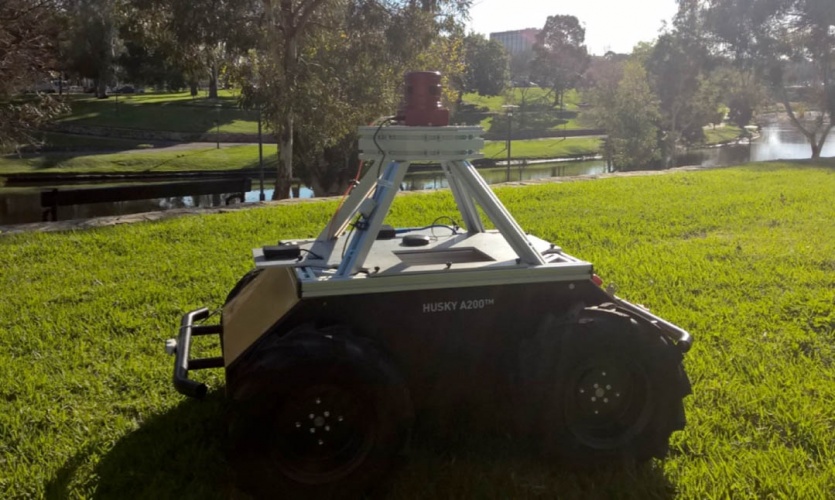
(Credit: Don Debold)
The system, designed with autonomous vehicles in mind, takes inspiration from a neuron in dragonfly brains that anticipates movement. Known as CSTMD1, the neuron increases the insect’s response in a small ‘focus area’ just ahead of the object being tracked. If a target disappears, the focus area spreads over time, following the previous path and allowing the dragonfly’s brain to predict where the target is most likely to reappear. This ability is being replicated in a small robot in Adelaide to test its potential for machine vision.
“It is one thing for artificial systems to be able to see moving targets, but tracing movement so it can move out of the way of those things is a really important aspect to self-steering vehicles,” said Dr Steven Wiederman, from Adelaide University’s Medical School.
“What we found was the neuron in dragonflies not only predicted where a target would reappear, it also traced movement from one eye to the other – even across the brain hemispheres.”
“This is also evident in cluttered environments where an object might be difficult to distinguish from the background.”

(Credit: University of Adelaide)
According to the team, this is the first time a target-tracking model inspired by insects has been implemented on an autonomous robot and tested under real-world conditions. The research, which is published in the journal eLIFE, could help driverless vehicles adapt in fast-moving traffic and react to unexpected incidents.
South Australia - home to the University of Adelaide - is a leading centre for driverless development, having hosted the southern hemisphere’s first ever autonomous trials in 2015. Coventry-based RDM group, one of the UK’s leaders in the technology, opened its Asia-Pacific headquarters in Adelaide this year. In a 2016 interview with The Engineer, the group’s autonomous vehicles programme director Miles Garner explained why the region is so appealing.
https://www.theengineer.co.uk/rdm-the-midlands-manufacturer-hoping-to-reshape-urban-transport/
“Australia would really be a perfect type of location to actually build a factory,” he said. “ It would help us to take on the whole Asia-Pacific Rim area if we had a place in Australia. As an engineer, it really is an open door. There’s lots of help from the government, especially the South Australia government… out of the whole world, I’d say the Asia-Pacific Rim region is the biggest opportunity for us.”




Glasgow trial explores AR cues for autonomous road safety
They've ploughed into a few vulnerable road users in the past. Making that less likely will make it spectacularly easy to stop the traffic for...